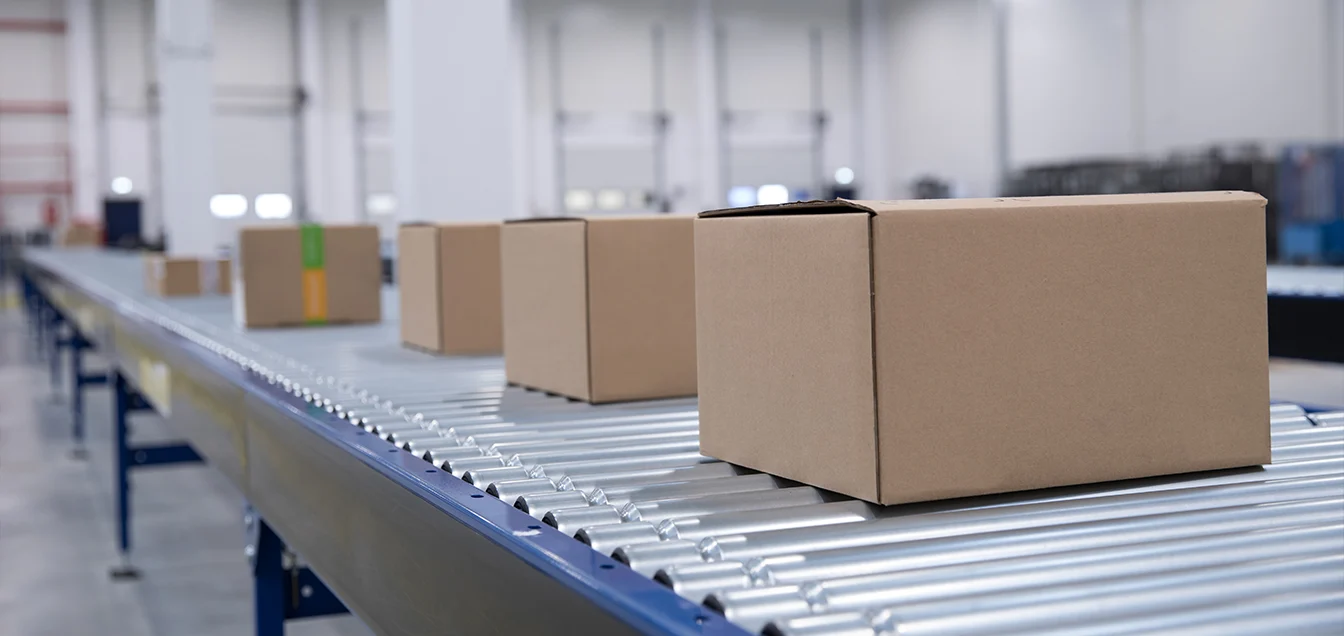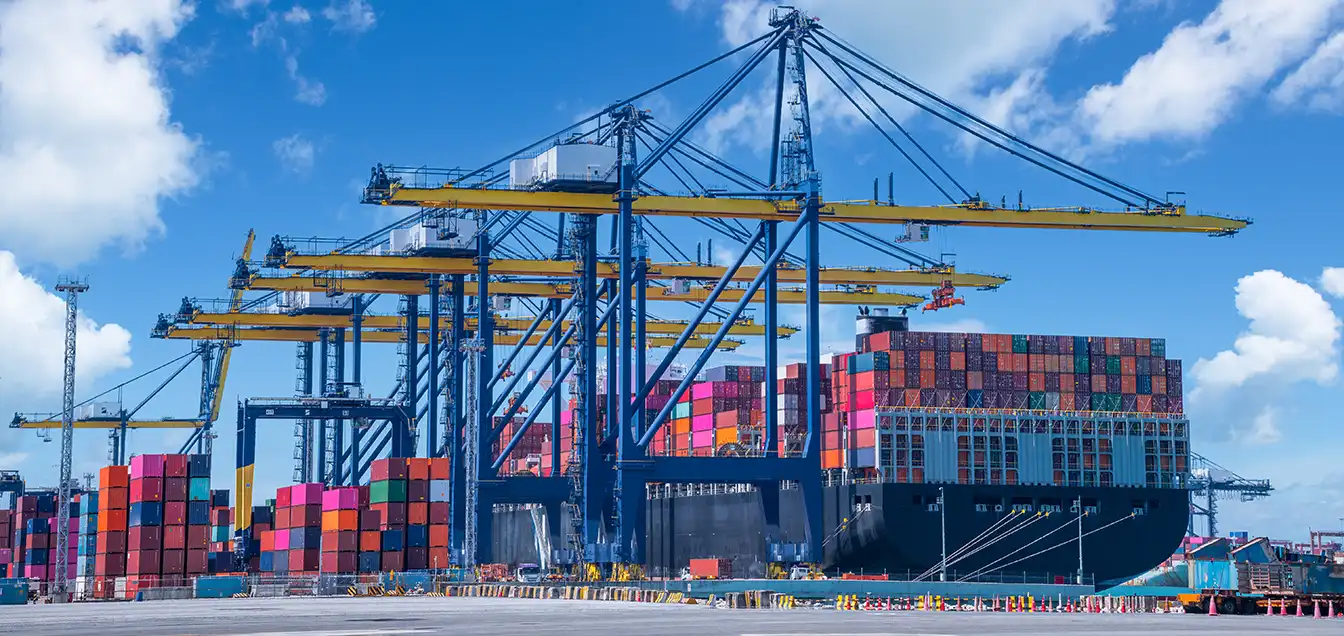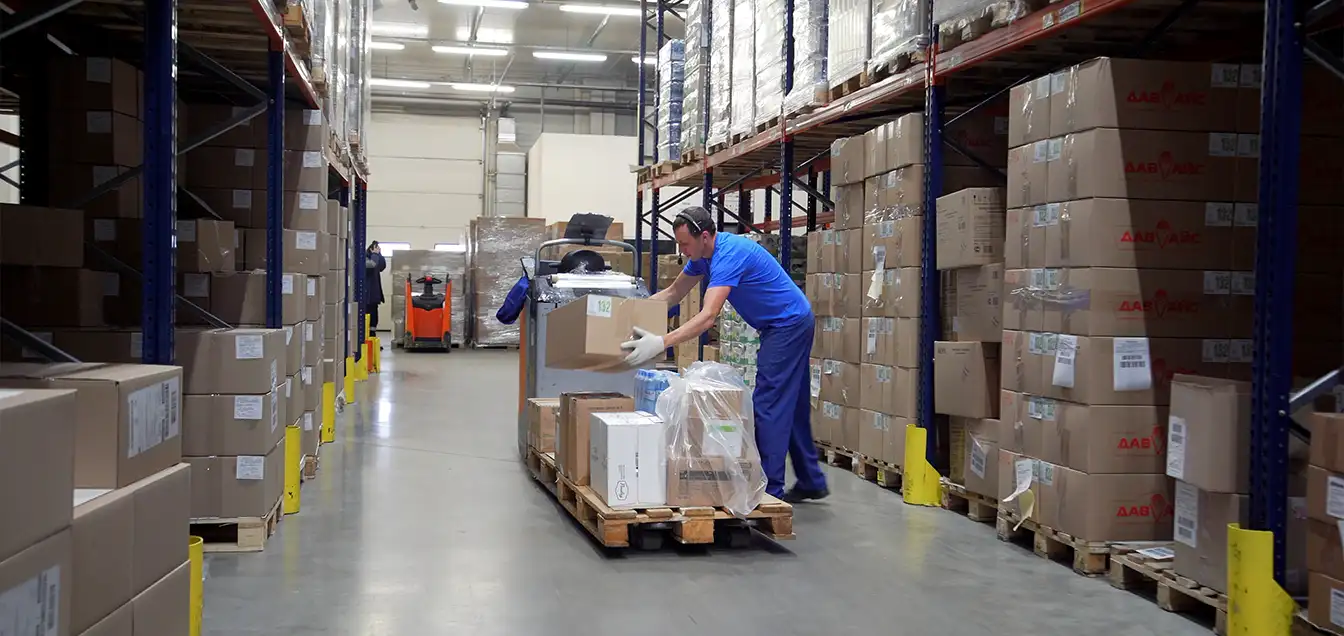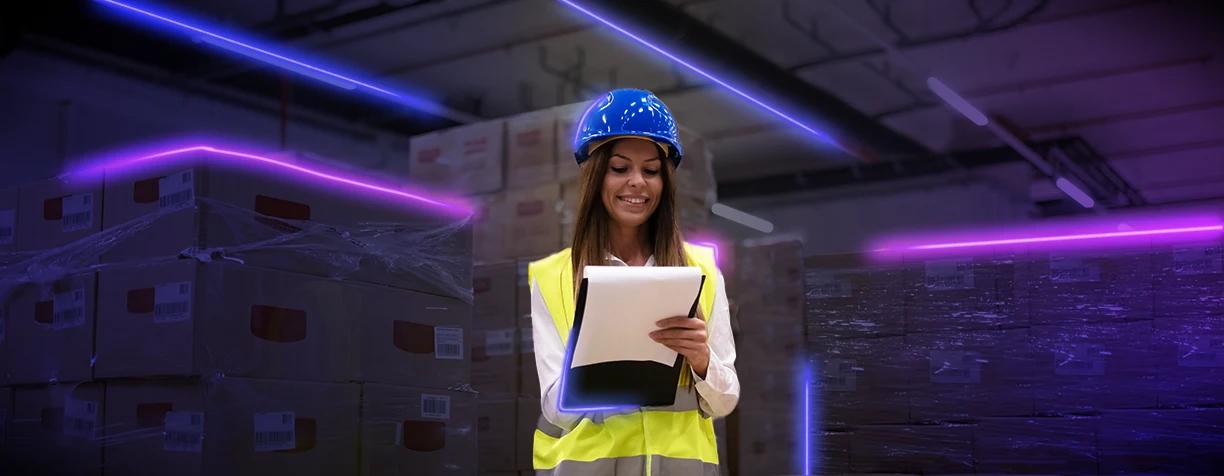Navigating the bustling landscape of e-commerce requires businesses to adapt quickly to consumer demands and technological advancements. This is why the Ultimate Guide to Fulfillment Services in Canada is an invaluable asset for anyone looking to understand the intricacies of order fulfillment. Knowing how fulfillment services work is essential for businesses aiming to establish a strong foothold in today’s marketplace. This guide offers a deep dive into logistics technologies, the world of third-party logistics (3PL), and modern solutions that streamline order processing and shipping.
Table of Contents
Understanding the New Customer Expectations
We live in an age where customer expectations shoot through the roof. People want their orders to be processed swiftly and delivered accurately. This is where fulfillment services come into play—they are not just part of the logistics process; they’re critical to customer satisfaction. This Complete Guide to Fulfillment Services in Canada will elaborate on various aspects of fulfillment, arming you with insights designed to sharpen your logistics strategy.
What is 3PL Fulfillment?
Let’s break down 3PL fulfillment. The term stands for third-party logistics, which refers to outsourcing logistics responsibilities to specialized service providers. These providers take care of essential logistics tasks like storage, managing inventory, processing orders, packaging, and shipping. As outlined in the Ultimate Guide to Fulfillment Services in Canada, partnering with a reputable 3PL Canada provider such as DelGate offers businesses specialized expertise. This partnership allows companies to focus on what they do best, rather than getting wrapped up in intricate logistical details.
Why Consider 3PL Fulfillment?
Cost Efficiency: One significant advantage of 3PL is cost savings. By outsourcing logistics, businesses can avoid hefty investments in warehousing and technology, cutting down on labor costs as well.
Expertise: A dedicated 3PL provider brings years of industry experience and technological know-how, elevating your operational efficiency.
Focus on Core Business: By shifting logistics responsibilities to professionals, businesses can allocate more resources to product development and customer engagement.
Here’s a practical scenario: Consider a small health and wellness brand that made the switch to third-party logistics, utilizing DelGate. This strategic decision resulted in a 40% increase in delivery speed and a 25% reduction in logistics costs. These improvements exemplify the kind of benefits highlighted in the Ultimate Guide to Fulfillment Services in Canada, pointing to how effective logistics strategies can lead to enhanced efficiency and sustainability.
The Role of Fulfillment by Amazon

In the e-commerce landscape, where competition is fierce, companies are consistently searching for reliable methods to elevate customer experiences. As mentioned in the Ultimate Guide to Fulfillment Services in Canada, Fulfillment by Amazon (FBA) has become a popular choice for many sellers looking to take advantage of Amazon’s vast customer base. With FBA, sellers can store their products in Amazon’s fulfillment centers. Once customers place an order, Amazon handles storage, packaging, and shipping. This model eliminates many logistical headaches, making it an appealing option for sellers wanting to broaden their reach.
Advantages of Using FBA
- Prime Eligibility: FBA products automatically qualify for Amazon Prime, which boosts visibility and conversion rates.
- Comprehensive Customer Support: With FBA, sellers benefit greatly from Amazon’s robust customer service, as Amazon manages inquiries and returns. This ensures a seamless customer experience.
- Speed of Delivery: Amazon’s extensive logistics network means rapid order fulfillment, which is vital for retaining customer satisfaction and encouraging repeat business.
- Brand Trust: Associating with Amazon inherently boosts a seller’s credibility, thanks to the trust the brand has built over the years.
That said, it’s essential for sellers to be mindful of the fees tied to FBA services, as these can significantly affect overall profit margins. Gaining clarity on these expenses is a crucial aspect of making educated decisions, as explored in the Ultimate Guide to Fulfillment Services in Canada.
What Is an E-commerce Fulfillment Service?
An e-commerce fulfillment service is an integrated solution that aids businesses in managing logistics efficiently. These services usually encompass inventory management, order processing, picking, packing, and final delivery. By utilizing fulfillment services Canada, businesses can not only optimize inventory levels but also significantly reduce overhead costs and enhance customer satisfaction—concepts explored thoroughly in the Ultimate Guide to Fulfillment Services in Canada.
Key Components of E-commerce Fulfillment
- Inventory Management: Keeping a close eye on stock levels is essential. Businesses must ensure that popular products are consistently available for customers.
- Order Processing: Efficiently managing the order lifecycle—from placement to delivery—ensures that customers receive their products promptly.
- Shipping: Coordinating effectively with carriers is vital for timely and complete deliveries, which ultimately enhances customer satisfaction.
- Returns Management: Efficiently handling customer returns builds trust and enhances the overall customer experience.
Utilizing an efficient e-commerce fulfillment service can greatly simplify operational complexities, positioning businesses favorably in a highly competitive environment. The Ultimate Guide to Fulfillment Services in Canada stresses that the choice of the right partner plays a significant role in enhancing efficiency and promoting growth in this ever-evolving landscape.
The Impact of Fulfillment Automation Technology
The introduction of fulfillment technology has completely transformed the logistics industry, especially in areas like Canada where the demand for efficient services is on the rise. Automation leads to enhanced efficiency, reduced human error, and accelerated order processing times. Providers of fulfillment services Canada are keen to adopt these advancements, resulting in innovative solutions tailored to meet the evolving needs of businesses and consumers alike. Here’s a snapshot of some key automated technologies featured in the Ultimate Guide to Fulfillment Services in Canada:
- Automated Picking Systems: Utilizing robotics in warehouses can drastically speed up the picking process, allowing for faster and more accurate fulfillment than human labor could achieve.
- Warehouse Management Systems (WMS): These software solutions offer a comprehensive overview of warehouse operations, including inventory tracking and order processing.
- Transportation Management Systems (TMS): This software aids companies in managing, executing, and optimizing the shipping of goods while providing real-time updates on delivery status.
- Artificial Intelligence (AI): AI technologies analyze customer data to predict demand trends, ensuring that inventory levels can meet expected sales.
Incorporating these technologies can lead to smoother operations, contributing significantly to the fastest shipping in Canada. When customers receive accurate tracking and quick turnarounds, it enhances their overall experience and fosters loyalty.
Making the Most of Fulfillment Services
Effectively using fulfillment services can have a profound impact on a company’s profitability. According to the Ultimate Guide to Fulfillment Services in Canada, reliable fulfillment services like DelGate can elevate your logistics capabilities significantly. By partnering with such providers, businesses can shift their focus back to growth, all while ensuring that orders are delivered accurately and on time.
Steps to Implement Fulfillment Services
- Evaluate Your Logistics Needs: Start by assessing your order volume, product types, and geographical shipping zones. Knowing these parameters will help you identify the ideal fulfillment partner for your specific business needs.
- Research Potential Providers: Investigate 3PL companies and fulfillment services that align with your criteria. Look for those who have a robust technological infrastructure and a solid reputation in the marketplace.
- Establish Clear Communication: Communication is critical in any partnership. Make sure that open lines of communication exist between your business and the fulfillment partner to avoid misunderstandings and ensure seamless operations.
- Monitor Performance Metrics: After engaging a fulfillment provider, make it a priority to track performance against key metrics, including delivery times, order accuracy, and customer satisfaction scores.
Understanding Section 321 Fulfillment

Section 321 Fulfillment is gaining traction for e-commerce businesses importing goods into Canada. In the Ultimate Guide to Fulfillment Services in Canada, we highlight that this framework permits duty-free imports of products valued at under CAD 150, leading to significant cost savings and a more streamlined customs process for goods being shipped.
Benefits of Section 321 Fulfillment
- Cost Savings: Importing items without the burden of customs duties allows businesses to maintain healthier profit margins.
- Accelerated Customs Clearance: Goods qualifying under this provision tend to clear customs faster than others, further enhancing logistical efficiency.
- Competitive Edge: The reduction in import costs allows businesses to offer more competitive pricing, making them more attractive to consumers.
Embracing Section 321 compliance can thus help businesses compete more effectively in the ever-evolving landscape of retail fulfillment in Canada.
Emerging Trends in Fulfillment Services
Business owners must stay one step ahead of market trends to navigate the shifting landscape of e-commerce effectively. The following trends are shaping the future of fulfillment services:
1. A Move Toward Omnichannel Fulfillment
As consumer expectations rise, businesses are increasingly opting for omnichannel fulfillment strategies to create seamless shopping experiences across various platforms—be it online, in-store, or via mobile apps.
- Unified Inventory Systems: Companies adopting omnichannel strategies maintain a single view of their inventory, enabling effective management across multiple sales channels.
- Flexible Fulfillment Options: Omnichannel capabilities allow customers to choose from different fulfillment methods, such as in-store pickup or home delivery.
2. Adoption of AI and Machine Learning
The e-commerce industry is witnessing a rapid ascent in the use of AI and machine learning, overhauling fulfillment processes:
- Demand Forecasting: Utilizing historical sales data can help businesses predict future demand, keeping inventory levels optimized.
- Logistics Optimization: Advanced algorithms offer powerful insights into various logistics parameters, allowing companies to identify the best shipping methods and routes.
3. Personalization of Customer Experiences
As personalization becomes critical in e-commerce, fulfillment services are evolving to match these heightened demands:
- Customized Packaging: Offering personalized packaging can enhance brand identity and resonate positively with customers.
- Tailored Communication: Providing updates regarding order timeframes, shipping methods, and promotions personalized for customers can enhance their shopping experience.
A Look at 3PL Warehouse Services in Canada

3PL Warehouse Services in Canada offer a practical route for businesses keen to expand without the burden of hefty infrastructure costs. The Ultimate Guide to Fulfillment Services in Canada spotlights how these services bring much-needed flexibility and specialized expertise that many companies lack.
Core Services of 3PL Warehouses
- Storage Solutions: Well-organized facilities ensure that products are safely stored and managed.
- Order Fulfillment: Comprehensive services encompassing picking, packing, and shipping help streamline operations for businesses of all sizes.
- Returns Management: Efficiently handling returns ensures customer satisfaction, as this is a critical touchpoint for customer service.
- Custom Packing: Tailored packaging solutions that safeguard goods during transportation can enhance the overall reliability of the service.
- Shipping and Distribution: Leveraging established relationships with carriers provides businesses competitive shipping options.
Analyzing the Current Market Landscape
The Competitive Landscape
The rapid growth of e-commerce has birthed a fiercely competitive marketplace, making it essential for businesses to remain aware of their environment. The Ultimate Guide to Fulfillment Services in Canada emphasizes that understanding the competitive landscape aids in identifying best practices, emerging trends, and potential partnerships.
- Emerging Players: New fulfillment providers frequently innovate, introducing solutions that can offer additional advantages.
- Established Giants: Players like Amazon dominate sizable market shares, and studying their strategies yields insights that can aid smaller players in carving out their niche.
Market Size and Projections
Reports indicate that the fulfillment services market is on a growth trajectory, forecasting a notable compound annual growth rate (CAGR):
| Year | Market Size (CAD) | Projected Growth (CAGR) |
| 2021 | 2.5 Billion | 9% |
| 2022 | 2.7 Billion | 10% |
| 2023 | 3.0 Billion | 11% |
| 2024 | 3.5 Billion | 12% |
This growth data signals promising opportunities for businesses focused on logistics and fulfillment services. As highlighted in the Ultimate Guide to Fulfillment Services in Canada, this trend underscores shifting consumer needs and stresses the importance of refining operations.
Case Studies: Real-world Applications
Examining real-world examples can illuminate how different businesses effectively leverage fulfillment services. Below are a few compelling case studies highlighting successful strategies:
Case Study 1: A Technology Retailer
Facing rising consumer expectations, a technology retailer turned to E-commerce Fulfillment in Canada strategies. They began implementing an omnichannel strategy and adopted AI for effective demand forecasting. These changes resulted in an impressive 85% accuracy rate in stock management, drastically minimizing instances of stockouts during high-demand seasons.
Case Study 2: Fashion E-commerce Brand
A Canadian fashion e-commerce company found itself dealing with inventory management issues. By opting for 3PL services, the brand not only improved its operational efficiency but also appealed to eco-conscious customers. They emphasized sustainable packaging and green logistics, which ultimately led to a remarkable 50% increase in year-on-year sales.
Conclusion
The Ultimate Guide to Fulfillment Services in Canada underscores the integral role of logistics in contemporary retail. By navigating the complexities of third-party logistics, effectively utilizing advanced technologies, and understanding modern regulations like Section 321 Fulfillment, businesses can optimize their operations while heightening customer satisfaction. This Fulfillment Services in Canada Guide reiterates that ongoing learning and flexibility are vital to seizing the opportunities that arise within the fulfillment sector.





